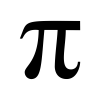After grueling hours for troubleshooting, I've finally realized that my eyes alone aren't enough. I've read up on the basic form: getting text from an external picture file and mapping to squares. I've debugged all of the blasted hlsl errors, and currently, no compile errors show up... But neither does a texture. ...And neither does my text. I can't seem to place my finger on it...
No errors leaves me to believe that it's something set syntactically correct, but I can't place it. I've check culling (none), texture, shader, ...Just nothing shows up. The back buffer does get cleared, and my object class displays what is handed to it. So here goes:
SetTextShaderConfiguration() gets placed in front of DrawText(), in the Render() function. It sets the view to screen-space and sets the shaders.
void InfiniteText::SetTextShaderConfiguration(){
UINT stride=sizeof(VertexText);
UINT offset=0;
iD3D.DeviceContext->VSSetShader(Fontvs,0,0);
iD3D.DeviceContext->PSSetShader(Fontps,0,0);
Projection=iD3D.mProjection;
iD3D.WorldCB.mWorldVP=XMMatrixTranspose(Projection);
iD3D.DeviceContext->UpdateSubresource(iD3D.MatrixBuffer, 0, NULL, &iD3D.WorldCB, 0, 0);
iD3D.DeviceContext->VSSetConstantBuffers(0,1,&iD3D.MatrixBuffer);
iD3D.DeviceContext->IASetInputLayout(InLayout);
iD3D.DeviceContext->IASetVertexBuffers(0,1, &FontVertexBuffer, &stride, &offset);
iD3D.DeviceContext->IASetPrimitiveTopology(D3D11_PRIMITIVE_TOPOLOGY_TRIANGLELIST);
iD3D.DeviceContext->PSSetShaderResources(0,1, &FontSRV);
iD3D.DeviceContext->PSSetSamplers(0,1,&FontSRVSampler);
} The texture and vertex buffers are initialized:
void InfiniteText::InitializeText(){
float textureWidth=551.0f;
UINT numLetters=32;
HRESULT hr;
D3DX11CompileFromFile(L"Shaders.hlsl", NULL, NULL, "VShader", "vs_5_0",0,0,0,&FontvsBuffer,0,0);
D3DX11CompileFromFile(L"Shaders.hlsl", NULL, NULL, "PShader", "ps_5_0",0,0,0,&FontpsBuffer,&ppErrorMsgs,0);
hr = iD3D.Device->CreateVertexShader(FontvsBuffer->GetBufferPointer(),FontvsBuffer->GetBufferSize(), NULL, &Fontvs);
if(FAILED(hr)){
MessageBox(iEngine.hWnd, L"CreateVertexShader Failed", L"Failed", MB_OK);
}
hr = iD3D.Device->CreatePixelShader(FontpsBuffer->GetBufferPointer(),FontpsBuffer->GetBufferSize(), NULL, &Fontps);
if(FAILED(hr)){
MessageBox(iEngine.hWnd, L"CreatePixelShader Failed", L"Failed", MB_OK);
}
D3D11_INPUT_ELEMENT_DESC IEDesc[]={
{"POSITION",0,DXGI_FORMAT_R32G32B32_FLOAT,0,0,D3D11_INPUT_PER_VERTEX_DATA,0},
{"TEXCOORD",0,DXGI_FORMAT_R32G32_FLOAT,0,12,D3D11_INPUT_PER_VERTEX_DATA,0},
};
UINT NumElements = ARRAYSIZE(IEDesc);
hr=iD3D.Device->CreateInputLayout(IEDesc,NumElements,FontvsBuffer->GetBufferPointer(),FontvsBuffer->GetBufferSize(),&InLayout);
if(FAILED(hr)){
MessageBox(iEngine.hWnd, L"CreateInputLayout Failed", L"Failed", MB_OK);
}
D3D11_SAMPLER_DESC FontSamplerDesc;
FontSamplerDesc.AddressU=D3D11_TEXTURE_ADDRESS_WRAP;
FontSamplerDesc.AddressV=D3D11_TEXTURE_ADDRESS_WRAP;
FontSamplerDesc.AddressW=D3D11_TEXTURE_ADDRESS_WRAP;
FontSamplerDesc.Filter=D3D11_FILTER_MIN_MAG_MIP_LINEAR;
FontSamplerDesc.MipLODBias=0.0f;
FontSamplerDesc.MaxAnisotropy=0;
FontSamplerDesc.MaxLOD= D3D11_FLOAT32_MAX;
FontSamplerDesc.MinLOD=0;
FontSamplerDesc.ComparisonFunc=D3D11_COMPARISON_NEVER;
D3DX11CreateShaderResourceViewFromFile(iD3D.Device, L"Font.dds", NULL, NULL, &FontSRV, NULL);
hr=iD3D.Device->CreateSamplerState(&FontSamplerDesc, &FontSRVSampler);
if(FAILED(hr)){
MessageBox(iEngine.hWnd, L"CreateSamplerState Failed", L"Failed", MB_OK);
}
D3D11_BUFFER_DESC Vbufferdescription;
ZeroMemory(&Vbufferdescription, sizeof(Vbufferdescription));
Vbufferdescription.BindFlags=D3D11_BIND_VERTEX_BUFFER;
Vbufferdescription.Usage=D3D11_USAGE_DYNAMIC;
Vbufferdescription.CPUAccessFlags=D3D11_CPU_ACCESS_WRITE;
Vbufferdescription.ByteWidth=sizeof(VertexText)*6*numLetters;
hr = iD3D.Device->CreateBuffer(&Vbufferdescription, NULL, &FontVertexBuffer);
if(FAILED(hr)){
MessageBox(iEngine.hWnd, L"CreateBuffer Failed", L"Failed", MB_OK);
}
}
and finally the DrawText() function:
bool InfiniteText::DrawString(char* Text, float xPos, float yPos){
int letterSize = sizeof(VertexText)*6;
int textSize = strlen(Text);
if(textSize > numLetters)
textSize=numLetters;
float cScreenWidth = 32.0f/iD3D.cWidth;
float cScreenHeight= 32.0f/iD3D.cHeight;
float TexelWidth= 32.0f/textureWidth;
D3D11_MAPPED_SUBRESOURCE MappedSub;
HRESULT hr = iD3D.DeviceContext->Map(FontVertexBuffer, 0, D3D11_MAP_WRITE_DISCARD, 0, &MappedSub); //MAP START
if(FAILED(hr)){
MessageBox(iEngine.hWnd, L"Map failed", L"Failed", MB_OK);
return false;
}
VertexText* Sprite = (VertexText*)MappedSub.pData;
const int indexA = static_cast<int>('A');
const int indexZ = static_cast<int>('Z');
for(int i=0; i<textSize;i++){
float thisStartX = xPos +(cScreenWidth * static_cast<char>(i));
float thisEndX =thisStartX + cScreenWidth;
float thisStartY = yPos;
float thisEndY = thisStartY + cScreenHeight;
Sprite[0].Translation=XMFLOAT3(thisEndX,thisEndY,1.0f);
Sprite[1].Translation=XMFLOAT3(thisEndX,yPos,1.0f);
Sprite[2].Translation=XMFLOAT3(thisStartX,yPos,1.0f);
Sprite[3].Translation=XMFLOAT3(thisStartX,yPos,1.0f);
Sprite[4].Translation=XMFLOAT3(thisStartX,thisEndY,1.0f);
Sprite[5].Translation=XMFLOAT3(thisEndX,thisEndY,1.0f);
int TexLookup=0;
int Letter= static_cast<char>(Text[i]);
if (Letter < indexA || Letter > indexZ){
TexLookup=(indexZ - indexA) +1;
}
else{
TexLookup=(Letter-indexA);
}
float texStart = 0.0f + (TexelWidth*static_cast<float>(TexLookup));
float TexEnd = texStart + TexelWidth;
Sprite[0].TextureCoord = XMFLOAT2(TexEnd,0.0f);
Sprite[1].TextureCoord = XMFLOAT2(TexEnd,1.0f);
Sprite[2].TextureCoord = XMFLOAT2(texStart,1.0f);
Sprite[3].TextureCoord = XMFLOAT2(texStart,1.0f);
Sprite[4].TextureCoord = XMFLOAT2(texStart,0.0f);
Sprite[5].TextureCoord = XMFLOAT2(TexEnd,0.0f);
Sprite= Sprite + 6;
}
iD3D.DeviceContext->Unmap(FontVertexBuffer,0); //MAP END
iD3D.DeviceContext->Draw(6*textSize,0);
return true;
}
The resources are created just fine... I think. Just that the text doesn't appear. Additionally, I've set the TOPOLOGY to line list. (To check to see if the geometry appeared at least) and also with ...FILL_WIREFRAME to which I've found that no geometry is there either. My controls class is up, and I've looked around a bit- making sure that it doesn't acquire another matrix somehow. [attachment=20230:Debug.png]
Also, the HLSL file:
Texture2D txDiffuse : register( t0 );
SamplerState samLinear : register( s0 );
cbuffer ConstantBuffer:register( b0 )
{
float4x4 WVP;
}
struct VS_INPUT
{
float4 Pos : POSITION;
float2 Tex : TEXCOORD0;
};
struct PS_INPUT
{
float4 Pos : SV_POSITION;
float2 Tex : TEXCOORD0;
};
PS_INPUT VShader(float4 inPos :POSITION, float2 inTexCoord: TEXCOORD0)
{
PS_INPUT output;
output.Pos = mul(inPos, WVP);
output.Tex = inTexCoord;
return output;
}
float4 PShader( PS_INPUT input) : SV_Target
{
float4 Color=txDiffuse.Sample( samLinear, input.Tex );
clip(Color.a-0.25);
return Color;
}
Another pair of eyes is appreciated!







